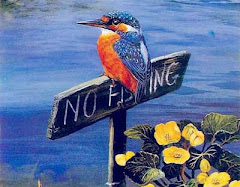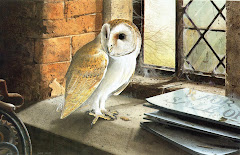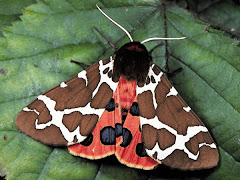
Met de Aborigines vaak ook Aboriginals en vroeger
Austraalnegers genoemd worden de eerste menselijke
bewoners van het Australische continent en hun
afstammelingen aangeduid. Het woord aborigines
stamt van het Latijnse ab origine hetgeen van
oorsprong betekent, dus de oorspronkelijke bewoners.
Volgens de theorieën zijn de Aborigines daar ongeveer
40.000 tot 60.000 jaar geleden aangekomen vanuit
Zuidoost-Azië. Op dat moment was het zeeniveau
veel lager dan nu, maar toch moeten zij met behulp
van een vaartuig het continent bereikt hebben.
Zelfs bij een daling van de zeespiegel van 150 meter
zouden er nog enkele zeestraten van ongeveer
100 km breedte moeten worden overwonnen.
Ook in de ijstijd kon je niet "met droge voeten"
van Indonesië naar Australië komen.
De Aboriginal-volken hebben elk hun eigen gewoonten
en gebruiken. Wel geloven ze allemaal in de Droomtijd.
Dat is de tijd waarin de wereld geschapen werd.
De geesten zwierven over het land en maakten het
landschap, de planten, de dieren en de mensen.
Het ‘dromen’ van de Aborigines betekent niet hetzelfde
als het dromen dat je in je slaap doet. Het is meer
een godsdienstig gevoel van verbondenheid met het land
en het geloof dat de geesten de wereld gemaakt hebben.

Die geesten konden er uitzien als mensen, maar ook
als dieren of als andere dingen. Aan het einde van
de ‘droomtijd’ zonken ze terug in de aarde.
Op speciale ‘droomplaatsen’ houden de Aborigines
nu ceremonies. Zo’n corroboree, een godsdienstig ritueel,
gaat gepaard met zingen en dansen. De mensen geloven
dat ze dan weer contact hebben met de droomtijdgeesten.
De mannen zijn zwaar behaard in hun gezicht en
op hun lichaam. De meeste Aborigines zijn donkerbruin,
maar als zij kleren gaan dragen, blijkt dat de huid onder
die kleren lichter wordt. Ook wordt hun huid soms bleker
na hun dood. Geen wonder dat de Aborigines doodsbang
waren, toen zij voor het eerst blanken zagen.
Zij beschouwden hen als wandelende lijken,
doden die opgestaan waren uit het graf.

De Aboriginals hebben ook een eigen vlag voor hun land.
Deze vlag is ontworpen door de Aboriginal Harold Thomas.
De oude vlag is aan de bovenkant zwart. Het zwart
symboliseert de Aboriginals en de onderkant is rood
en symboliseert de aarde. In het midden van de vlag
zie je een geel rondje die symboliseert de zon,
de bron van het leven.
http://www.dreamweb.nl/culture.htm

were the first people to set foot on the continent,
somewhere between 40,000 and 60,000 years ago.
There are about 500 different Aboriginal peoples
in Australia, each with their own language and
territory and usually made up of a large
number of separate clans.
Aborigines themselves, however, trace their creation
back to the Dreamtime, the beginning of time,
when the spirits created the world.
During Dreamtime, spirits rose from below
the Earth and transformed into all the natural elements
you see in Australia today -- rivers, lakes, mountains,
hills and caves. The spirits literally make up the land.
The Aborigines see these spirits in much the same
way as Christians view God or Muslims view Allah.
However, the Aborigines believe that these spirits
are alive within the land of Australia.
Because of this, Aborigines view the land
as sacred and treat it as such.
”WHEN WE TAKE CARE OF THE LAND,
THE LAND WILL TAKE CARE OF US”
The dreamings, or stories, of the Dreamtime are
also considered sacred, and they're kept secret from
the outside world. Elders draw these stories in a series,
called a dreaming trail, using symbols.
Young men then learn what the symbols mean and
how to translate them so they can pass the history
along to the next generation. Many Aborigines
consider the dreamings to be the absolute truth
-- an unquestionable recording of history.

Aborigines’ land was invaded from the end of
the 18th century onwards, with catastrophic
consequences for them.
Before the invasion, Aborigines lived throughout
Australia, although the highest population density
was along the coast. Here, people seem to have
moved seasonally between permanent settlements
near the sea and others at the headwaters of the coast rivers.
Evidence suggests that these communities
managed their environment carefully to ensure a steady
supply of food, bringing wild yams into gardens which
they irrigated, for example, or building artificial
dykes to extend the range of eels.
Those Aborigines who lived inland in the bush and
the desert lived by hunting and gathering, burning
the undergrowth to encourage the growth of plants
favoured by the game they hunted.
They were experts in seeking out water.
Today more than half of all Aborigines live in towns,
often on the outskirts in terrible conditions.
Many others work as labourers on cattle ranches
that have taken over their land.
Many, particularly in the northern half of the
continent, have managed to cling on to their land
and still hunt and gather ‘bush tucker’.

http://www.sino.net/australia-tourist-guides/history.html
WWW.australia_aboriginal_history/






































2 opmerkingen:
Anna, what a wonderful post! Thanks for having it in English, too! Very interesting information. I love the pictures. My favorite is the one with dancing men in the orange clothes. It's tough to know that these people have a difficult life now. Recently, I visited several place where American indians live, and I should say that it was a sad picture. I am glad that aborigines keep their dreamings.
Anna, I am very moved with these pictures of the aborigines, I love that they dream. I dream, one of my dreams is of Denmark, where my grandmother was born and raised. Aalborg Denmark, that's all I know.
I'm glad to have found a friend in a very fairy garden in Denmark. Thank you for the English translation.
cindy-stitches-n-stuff.blogspot.com
Een reactie posten